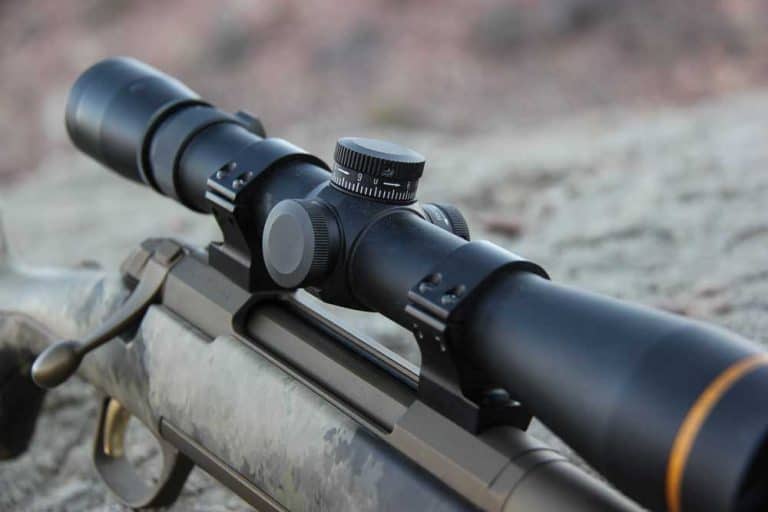You can have precision without breaking the bank…
Long-range shooting is a huge part of both hunting and showing off at the shooting range. With that, you need a rifle scope that provides ample eye relief and high-quality precision.
Table Of Contents
Best Riflescopes Under $500
- Leupold VX-Freedom Scout 1.5-4×28
- Nikon M-Tactical 3-12x42SF Matte MK1-MRAD
- Vortex Optics Diamondback Tactical First Focal Plane Riflescopes
- Nikon PROSTAFF P5 4-16x42SF Matte MK1-MOA
- Athlon Optics Argos HMR
But what if you’re on a budget? How can you grab the best scope without going broke?
Fear not because we have the answer for you. Riflescopes have a huge price range, but you don’t have to sacrifice quality for cost. We have the best riflescopes you can get for under $500, which is an admirable price point for a scope.
In this article, we’ll go over what riflescopes can do for you, what they are, how much they regularly cost, whether you can interchange your scope with various rifles, and what to look for when buying your own rifle scope.
Lastly, we’ll cover the top riflescopes available to you, all under the cool price of $500.
With that, let’s get shooting!
What Are Riflescopes?
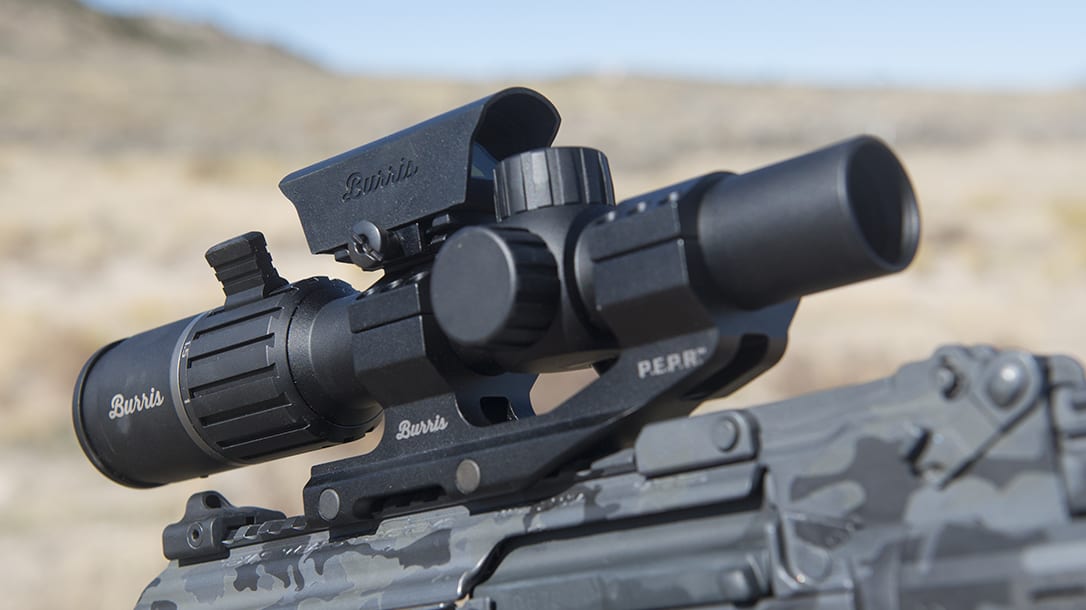
Hunting optics is a huge part of the game these days. Without riflescopes, you seriously deter yourself from having the most accurate shooting experience. Riflescopes are attachments you put on top of your rifle.
A quality scope gives you the ability to have a magnification range, which brings things that are far away — targets, game — closer.
A good scope will have nice, accurate crosshairs, and they can be helpful in low-light conditions.
Not only that, but they can provide much-needed eye relief and greatly expands your field of view. What’s more, it gives you sighting options, which is ideal for your hunting rifle or for target shooting.
What Are the Benefits of Riflescopes?
A great scope for your rifle should help you improve your shooting prowess, whether you’re on the range or out in nature. You want to be able to shoot long distances without reducing your accuracy and precision.
With the right optical system, you’re open to a litany of advantages, including:
- Clear view, clear image, and parallax: The biggest benefit is getting a telescopic view of what you’re shooting at. Using low-dispersion and high-dispersion glass, these scopes have the best long-range lenses to account for parallax. Parallax is the apparent movement of objects viewed from different distances. For example, if you look straight out into a clearing, it might seem that a deer on the other end is moving really slow. With a riflescope, you can see that the deer is, in fact, grazing quickly. That’s parallax and you’ll be able to see it clearly, which vastly improves your hunt.
- High magnification: Most riflescopes have high magnification levels, which of course helps out a ton. If you’re on the shooting range, a long-range scope can magnify the target so that it encompasses your entire field of vision. And with a variable power scope (where you can adjust the power of magnification), it boosts your eye box, which is the position of your eye behind the scope while maintaining a full field of view while also allowing for lateral and axial movement.
- Anti-reflective glass averts glare: Scopes not only give you a full view of something hundreds of meters away, but they also refract sunlight. Light transmission is either reduced or stopped when it’s reflected off the glass. In fact, some of the glass material used in these scopes can even absorb some of the light transmission.
- Hunting scopes are helpful: Hunting is all about stealth and speed. Having a riflescope will improve both. You don’t have to get as close as you’d have to without a scope, and having a scope with a quick focus eyepiece will allow you to get a bead on your kill in seconds, leaving you more time to take a breath, release the safety, and fire. They even have a name for this: target acquisition. Target acquisition is the detection and location of a target in sufficient enough detail to effectively employ lethal means. In other words, the quicker you can acquire your target, the better chance you have of making a confirmed kill. Scopes make sure you do this.
- Waterproof, fog proof, and shockproof: The material for these scopes need to be as tough as the gun itself. You can get scopes with aircraft-grade aluminum, which just sounds absurd. But it keeps it tough against the elements, including the wet, the fog, and shock from the recoil. As for water and fog, getting a scope with a quality O-ring will seal out any moisture.
- Accounts for windage: You can adjust your turrets and range when it comes to your scope. It can also account for elements at play other than distance, such as the wind, height differential, and more. This further enhances your accuracy, which makes you lethal on the shooting range and deadly out hunting.
- Night vision: Some scopes are downright gnarly, coming with super-advanced features like night vision technology. This isn’t extremely necessary, but with night vision you can shoot at any time, day or night. (Note: It’s illegal to hunt in complete darkness, and not many shooting ranges are operational past sunset. This would be more of a fun aside.)
As you can see, there are tons of benefits for nabbing yourself the best riflescope you can get (within monetary reason, of course). So, how much do these things cost, anyway?
How Much Does a Typical Rifle Scope Cost?
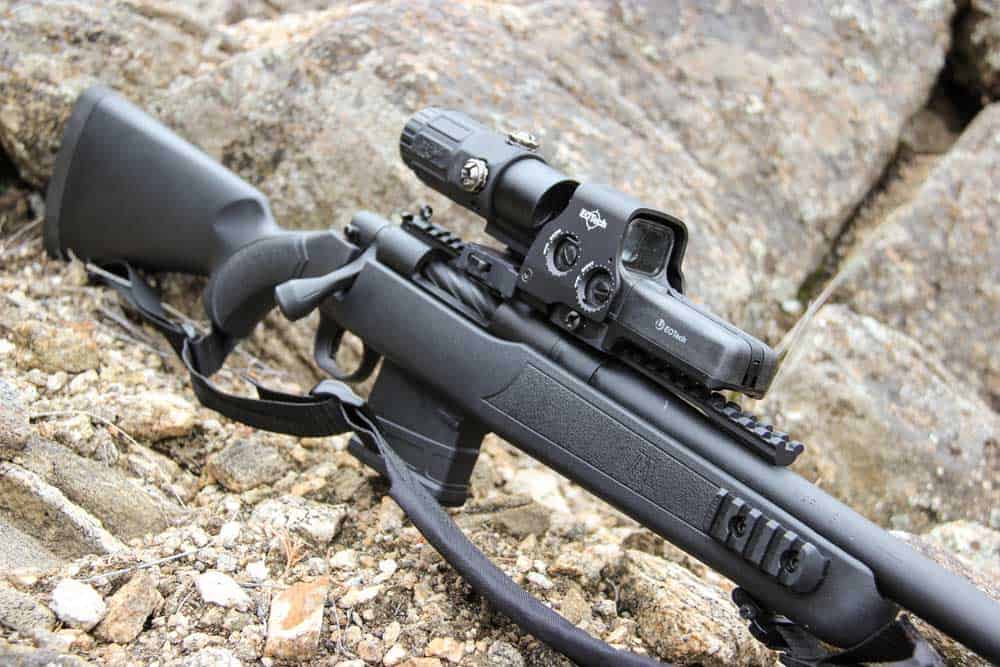
There’s a huge range for riflescopes, going from a not-so-quality $30 to an incredible $2000. This depends on material quality, brand, and type of scope.
For example, you can grab a scope off Amazon right now for next to nothing from a brand nobody’s ever heard of, or you can opt for a brand called Vortex (the Vortex Diamondback and the Vortex Viper are two of their most popular scope styles) and shell out over four figures’ worth.
For your purposes, you probably want something smack-dab in the middle; a scope that can get the job done without causing an emergency budget meeting.
Luckily, you can get a solid scope for much less than $1000.
Different Types of Scopes
We don’t want to get too far into the weeds here, but you should know a few details about the kinds of scopes available to you at under $500.
First, we have Mil-Dot reticle scopes. “Reticle” is the pattern of fine lines and/or markings built into the eyepiece of many sighting devices, riflescopes included. They usually provide measurement references as you’re peering down the scope.
A Mil-Dot scope is also known as a range estimating reticle and is really helpful if you don’t know the range of your target.
It’ll give you calculations to figure out the distance, such as a target that takes up four of the dots means they’re 100 meters away (as an example). These can get complicated, but you can still use it for both hunting and target shooting.
Next is the BDC riflescope, which is the most popular. BDC reticle (bullet drop compensating reticle) scopes are best used when you know your range. It has the middle dot, but then it has a bunch of dots going down the bottom line.

This allows you to tilt your rifle up the farther your target is.
So, if your gun is sighted in at 100 yards, and your target is 200 yards, you know to place one of the lower dots on where you want to shoot, a.k.a. your target. It can also have hash marks on either side of the middle to account for windage.
Last, there is the duplex reticle. This is the most common reticle in hunting rifles and is both simple and all-purpose. It involves thick lines that thin out, drawing your attention to the exact middle of the glass.
It is precision at its finest, making you focus on a single point. However, it does not account for windage or hold-over needs based on range, so perhaps it’s ideal to find either Mil-Dot or BDC reticle scopes.
Thankfully, most scopes can be adjusted so you don’t even have to switch your dot; you can simply twist your turrets to the estimated range and aim dead-center. (More on turrets later.)
Other specialized scopes include illuminated reticles, which shows a red light point and is therefore terrific in low-light situations. There are also exclusive scopes that have “dead-hold BDC reticles,” which are designed to minimize the need for guessing bullet hold-over at long distances.
This is a very specific scope and might be outside of the price range of $500 or less.
Now, there’s one more scientific section we have to get through in order to fully understand your frugal scope purchase…
First Focal Plane vs. Second Focal Plane
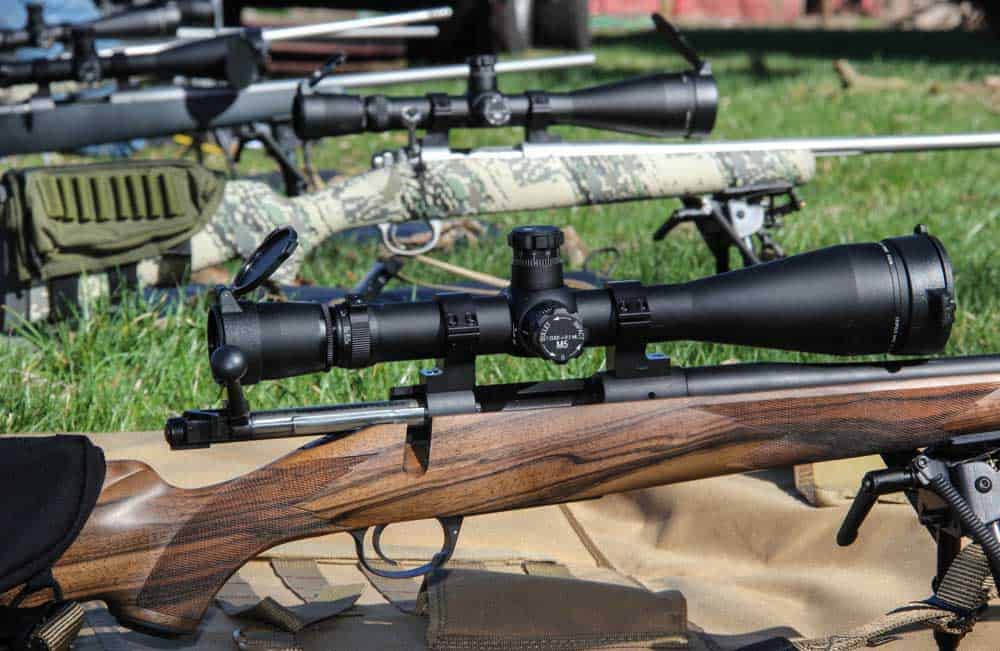
Focal plane reticles are another beast entirely. A scope’s reticle is placed in the First Focal Plane (FFP) or the Second Focal Plane (SFP), which changes the entire experience of looking through that scope.
The main difference is that an SFP reticle will seem to be the same size, no matter how much you magnify it. In short, the crosshair lines stay the same. With an FFP reticle, the lines and dots grow to account for distance.
(Side note: The first focal plane is located in the ocular lens, which is the lens closest to your eye. The second focal plane is located in the objective lens, which transmits light back to the ocular lens and allows you to see at all.)
Because of this feature, first focal plane scopes have become very popular for hunters who want to shoot long-range. The problem with SFP reticles is that the hold-over for the scope is only accurate at one magnification setting, usually the highest.
If you zoom back out, the lines shrink relative to the target, making it much more difficult to pinpoint your shot. FFP, on the other hand, gets bigger as you zoom in, keeping everything relative.
The best long-range scopes will most likely have FFP, and this is what you should be looking for in order to have the best long-distance shooting experience.
What About Side Focus?
Side focus is a feature that provides optimal accuracy over an even greater range of distances. It does this by accounting for parallax error. Remember, parallax is the optical displacement of two different objects at two different distances.
In a riflescope, parallax error is the apparent shift of the crosshairs relative to the target. With a side focus, you ensure that when you put the middle dot on your target, your shot should hold true right there.
Be on the lookout for it on your scope.
Turrets and MOA
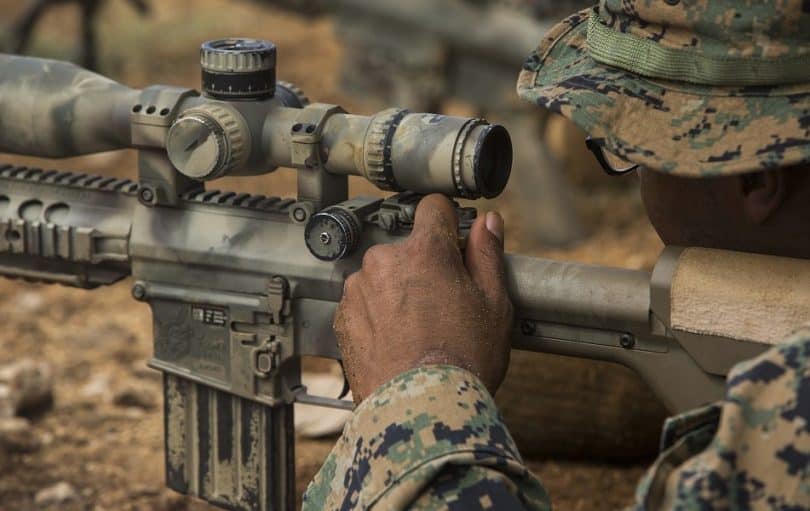
Turrets are the knobs that are on the top and side of the scope. They adjust the range and magnification of the scope. MOA (minutes of angle) is an angular measurement with the basic rule that one MOA — or one minute — is equal to one inch at 100 yards.
In layman’s terms, this is the math behind what the turrets should already tell you; many of them have the numbers etched out on the dial. If your target is 400 yards away, boom, place the turret so that it reads 400.
There are zero-reset turrets which are fantastic for both hunting and range shooting. Essentially, you can “zero” your scope at any range you want (say 200 yards). The higher you go — setting 1, setting 2, etc. — the farther it will be ranged.
So setting 1 could be 225 yards, setting 2 could be 250, and so on. This is nice if you regularly shoot from a similar range. Hunting big game might give you a regular 100- to 300-yard range, which makes it ideal to have a zero-reset turret.
Can All Rifles Use the Same Scope?
In short, not really. A lot of the rifle scopes today are designed specifically for certain calibers, making them unique. So long as you know what caliber your rifle is, you can find a scope under $500 for that exact gun.
However, this does not mean that scopes aren’t interchangeable. A single scope can work on a lot of various guns. If this is something important to you, then consider getting a scope that can be used for a popular caliber and can be comparable when attached to other calibers that are close.
Again, if you’re looking for scopes that aren’t for hunting rifles, such as a tactical riflescope for your ARs or whatnot, it won’t give you the same amenities as a hunting riflescope.
Tactical riflescopes range at 1000 yards or more, which makes it impractical for most hunters. But if you’re into shooting game or targets from ridiculously long ranges, then, by all means, get a tactical riflescope.
What to Consider When Buying the Best Riflescopes Under $500
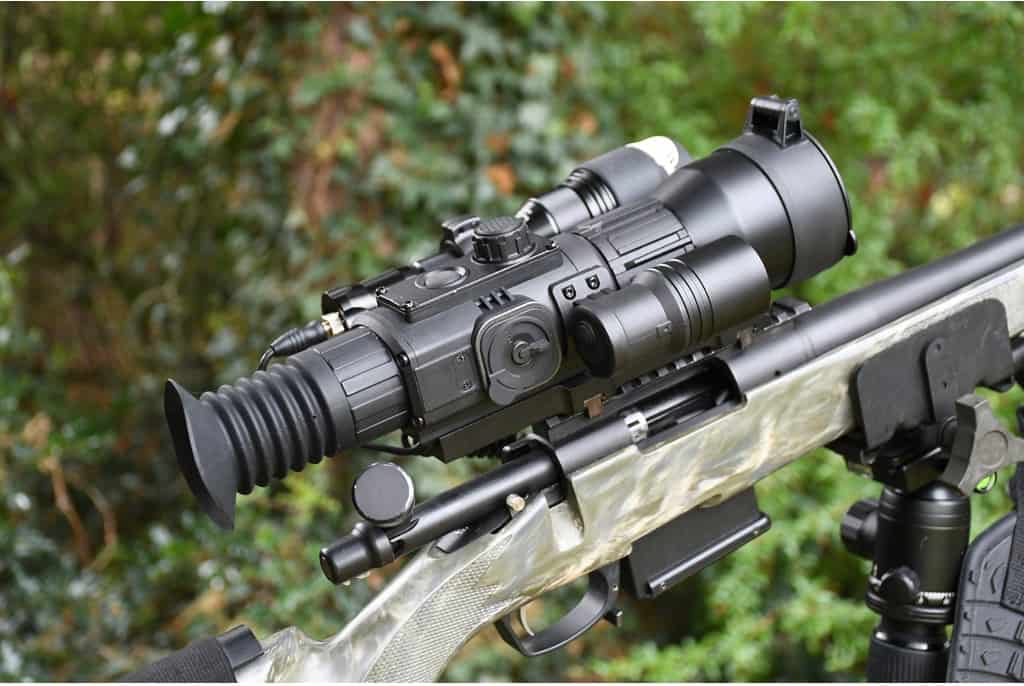
Amazon is super helpful, but it isn’t in your best interest to grab the first sponsored long-range riflescope you find on page one. You need to find a high-end scope that gives you the most advantages while keeping the cost low.
With that in mind, you must look for these characteristics in your riflescope:
- Lifetime warranty: This is a no-brainer. You want a warranty that lasts forever because A) riflescopes are expensive equipment, and B) they run a high risk of getting damaged out in the elements. So get this as insurance. It’s worth it.
- Turret type: We touched on this briefly above, but if you’re gonna go with one scope, make sure it has a zero-reset turret. It makes the whole thing much easier. Plus, it allows you to go off the MOA system, which is highly regarded as one of the best calculations for range.
- Materials: Again, these bad boys have to be resilient. The warranty is nice, but you’d rather not use it. Instead, get high-quality materials that are durable and can last a really long time. Well-known brands don’t skimp on their materials, so they’re usually a safe bet.
- Cost: We want your riflescope to be under $500. If it’s considerably more, it isn’t worth the hurt in your pocketbook.
- Reticle type (Mil-Dot reticle vs. BDC reticle vs. Duplex reticle, FFP vs. SFP): We went over this earlier, but it bears mentioning here. BDC accounts for range, Mil-Dot has you estimate the range yourself, and Duplex reticles give you a single focus point. As for FFP and SFP, definitely prioritize the former. It will help big time with your shot at maximum — or minimum — magnification.
- Length and width: This is vital for both weight and slenderness. A lot of riflescopes are 30mm tubes or 32mm tubes, and these are sizes you’ll want to be in the market for. Anything too bulky and it’s too much additional weight. Too clunky and you’ll be banging it on trees and it might actually get in the way of your perfect shot.
Now that we have our criteria, let’s look at the cream of the scope crop!
Best Rifle Scopes Under $500 Reviewed
1. Leupold VX-Freedom Scout 1.5-4×28

First up on our list is the Leupold VX-Freedom series. This scope provides ample amounts of eye relief, coupled with the perfect magnification range to stretch the limit of your rifle.
Leupold is a time-tested brand that knows what it’s doing in terms of riflescopes. This scope has an easy-to-grip power selector, which lets you change magnification power with ease.
It also comes equipped with a rear focal plane reticle (what we know as SFP), which keeps the crosshairs fine throughout any magnification range. The ultralightweight design is waterproof and fog proof, with a one-inch main tube and 1/4 MOA precision finger click for windage and elevation adjustments.
Add to that the scratch-resistant lenses and a Twilight Light Management System that adds up to 10 minutes of extra light and eliminates 80 percent more glare-producing stray light than competitors, and you’ve got one hell of a riflescope.
A tried and true brand with a durable, quality product, you can’t go wrong with the Leupold VX-Freedom Scout 1.5-4×28.
Buy Leupold VX-Freedom Scout 1.5-4×28 Here
Nikon M-Tactical 3-12x42SF Matte MK1-MRAD
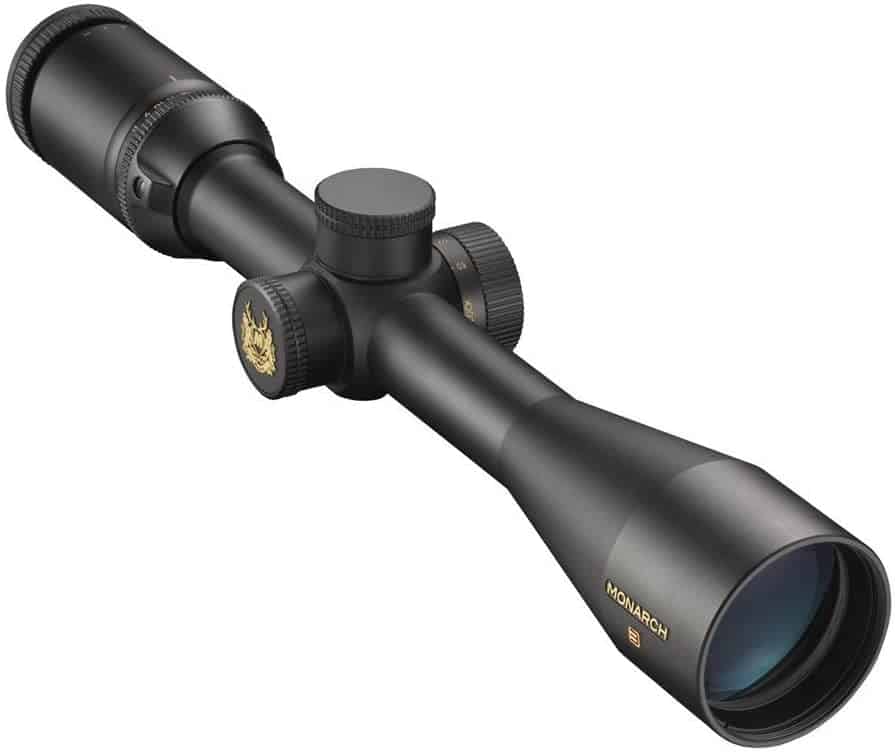
Nikon is another reputable brand name that pulls no punches with their riflescopes. The M Tactical in matte black is no exception.
This scope features eye box technology with a four-time zoom range and up to four inches of eye relief. Adjustments are super simple with spring-loaded instant zero-reset turrets. The quick focus eyepiece allows you to immediately bring the reticle into focus, an excellent feature. Plus, it has an ultra ClearCoat Optical System that provides up to 95 percent light transmission. Complete with a BDC reticle to help you, no matter what range you’re shooting at.
The M Tactical has everything you could ever want in a riflescope under $500. If you decide to go with this one, you won’t be disappointed.
Vortex Optics Diamondback Tactical First Focal Plane Riflescopes
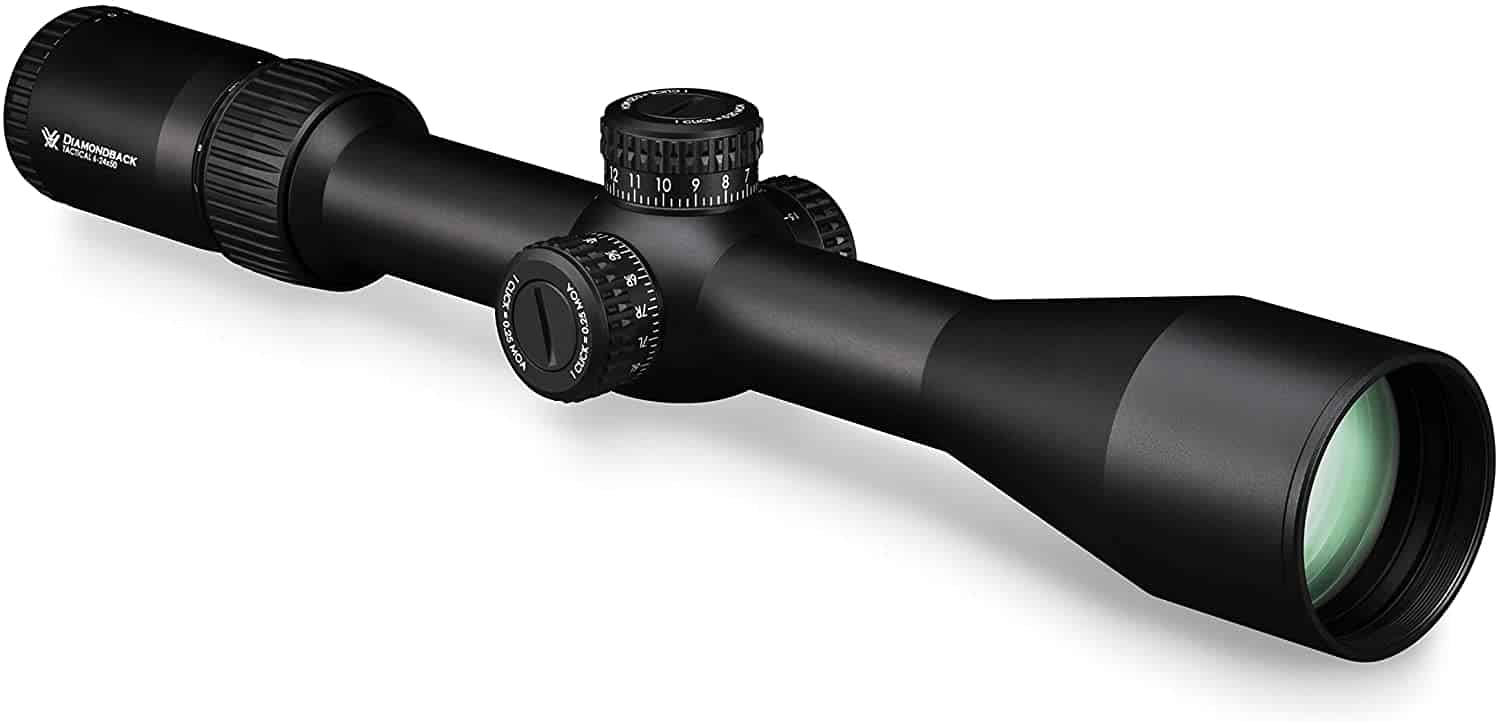
Vortex Optics Diamondback is another well-known product that backs its name up with outstanding performance.
This tactical riflescope uses an FFP reticle with extra low-dispersion glass and fully multicoated lenses. These present a crisp and bright sight picture, complete with a glass-etched reticle to keep subtensions accurate throughout the 4x zoom range. It has a precision-glide erector system that allows for smooth magnification, even in the harshest conditions. Not only that, but the exposed tactical turrets and side parallax knob also give you long-distance precision. Plus, it has a quick focus eyepiece, all leading to a fast, effective, accurate shot.
It’s made of a single piece of 30mm tube, making it shockproof, built to withstand recoil and other impacts. Finally, the O-ring seals out moisture, making it waterproof and fog proof.
Trust us, the Vortex Optics Diamondback has everything you need. Potentially the top scope on our list, no one would fault you for picking this one.
Buy The Vortex Optics Diamondback Scope Here
Nikon PROSTAFF P5 4-16x42SF Matte MK1-MOA
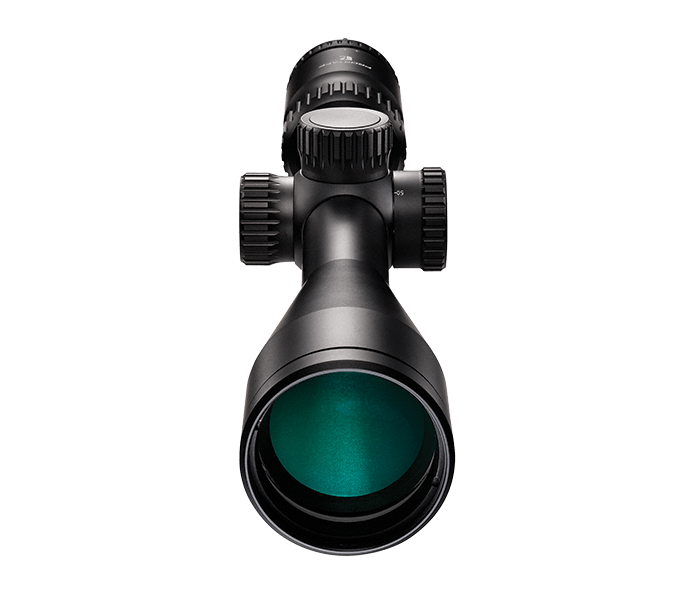
The second Nikon scope on our list, this PROSTAFF gives you plenty of options whether you’re out in the field or on the range.
One-inch diameter main body tube, interchangeable turrets, a 4x zoom ratio, and consistent eye relief are just a few of the features. Fully multicoated optics (antireflective) maximizes light transmission, brightness, and contrast. It has an O-ring to prevent moisture from entering the body of the scope, making it waterproof. And the quick focus eyepiece is a smooth turn aluminum ring with a rubberized eye guard (to keep your peepers safe). This offers a clear reticle focus and fast target acquisition.
Add to that spring-loaded instant aluminum zero-reset turrets, three types of reticles — MK1-MOA, BDC, and NIKOPLEX (essentially a duplex reticle) — and side focus parallax adjusters, and you’ve got what might be number two on our list. The Nikon PROSTAFF is for sure a fine choice.
Buy The Nikon PROSTAFF P5 4-16x42SF Matte MK1-MOA Here
Athlon Optics Argos HMR
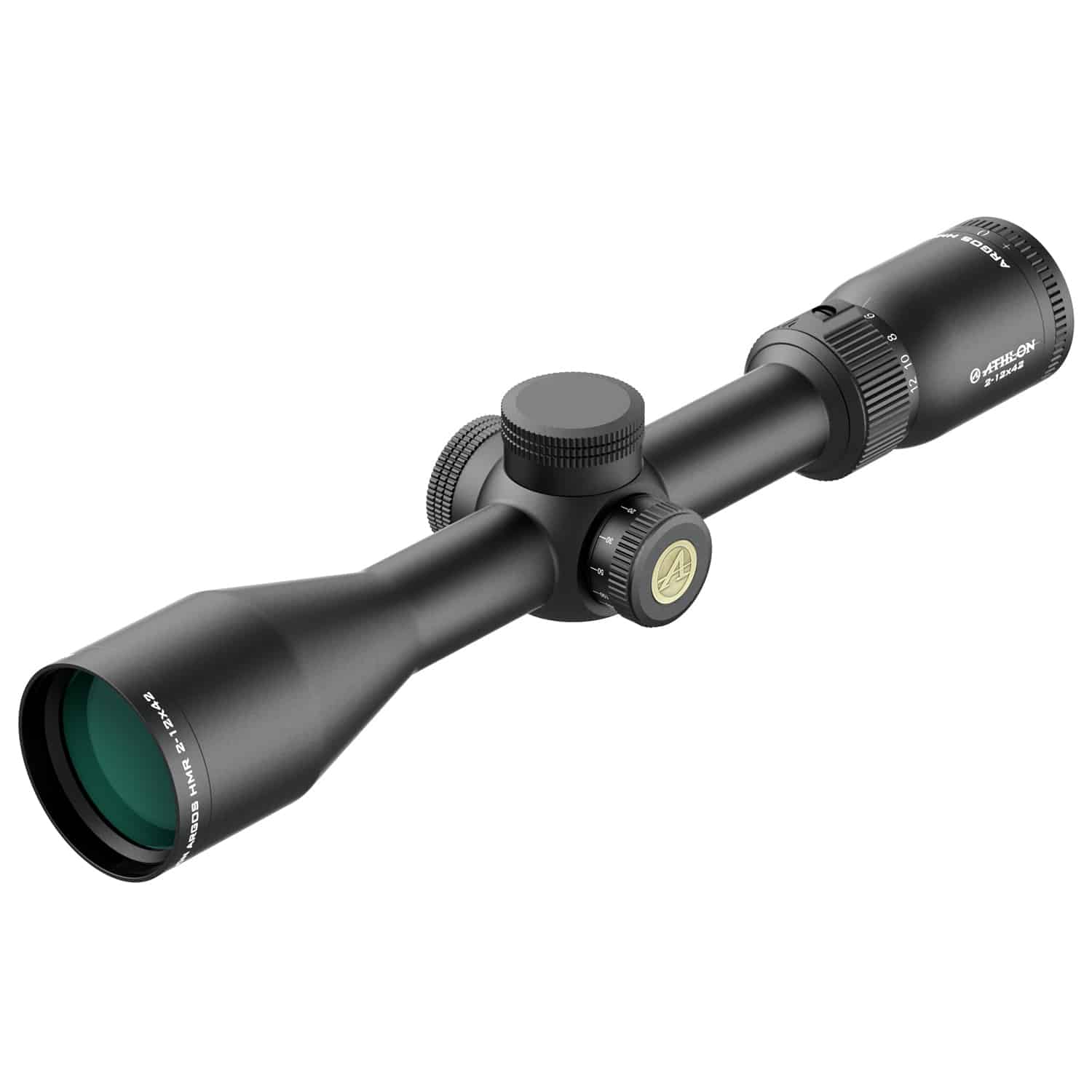
Last on our list is the Argos HMR from Athlon Optics. This compact and versatile hunting scope has all the bells and whistles you’re looking for at the right price.
It uses SFP reticles, side focus parallax adjusters, and advanced, fully multicoated lenses for a pure, crisp sight picture. Not to mention the riflescope has capped elevation and windage turrets. But the coolest part about the Argos HMR is that it has illuminated reticle options; so, you could have red-dot or red light crosshairs. Equipped as a one-inch diameter tube with 3.6-inch eye relief and weighing 21 ounces or lighter (depending on your model), and you have a sweet scope on your hands.
If you’re looking for illuminated reticles and everything along with it, look no further than the Athlon Optics Argos HMR.
Buy The Athlon Optics Argos HMR Here
Conclusion
You are now a bona fide expert on riflescopes, especially the ones that clock in at under $500. We’ve given you six high-end scope options, so go through them again and run them by the list of considerations. Find the scope that’s ideal for your rifle and go for it. The only way to truly know if you like a scope is if you test it out on the shooting range.
Once you’ve “scoped” out your perfect riflescope, there’s only one thing left to do — ready, aim, fire!
